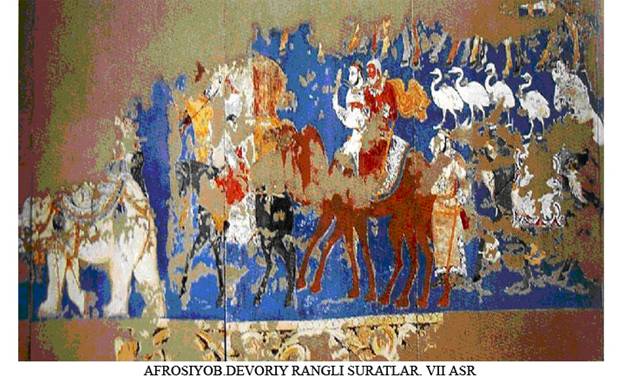Afrasiyab (Afrosiyob) is an ancient site of northern Samarkand, Uzbekistan, that was occupied from c 500 BC to 1220 AD. Today, it is a hilly grass mound located near the Bibi Khanaum Mosque.
Afrasiyab is the oldest part and the ruined site of the ancient and medieval city of Samarkand. It was located on high ground for defensive reasons, south of a river valley and north of a large fertile area which has now became part of the city of Samarkand.
The habitation of the territories of Afrasiyab began in the 7th-6th century BC, as the centre of the Sogdian culture.[1]
The term Qal’a-ye Afrasiab (Castle of Afrasiab) appeared in written sources only towards the end of the 17th century. The name is popularly connected with the mythical King Afrasiab. Scholars consider Afrasiab to be a distortion and a corrupted form of the Tajik word Parsīāb (from Sogdian Paršvāb), meaning "beyond the black river", the river being Sīāhāb or Sīāb, which bounds the site to the north.[2] Afrā is the poetic form of the Persian word Farā (itself a poetic word), which means 'beyond, further', while Sīāb comes from sīāh meaning 'black' and Āb meaning 'water; river; sea' (depending on the context).
The area of Afrasiyab covers about 220 hectares, and the thickness of the archaeological strata reaches 8–12 metres. First archaeological excavations were carried out in Afrasiyab in the late 19th century, by Nikolay Veselovsky. In the 1920s, it was extensively excavated by the archaeologist Mikhail Evgenievich Masson who placed artifacts found at the site in the Samarkand museum.[3] His archaeological study revealed that a Samanid palace had once been located at Afrasiyab. It was again actively excavated during the 1960-70s.
See also Afrasiab painting for wall paintings discovered in the archeological site.












